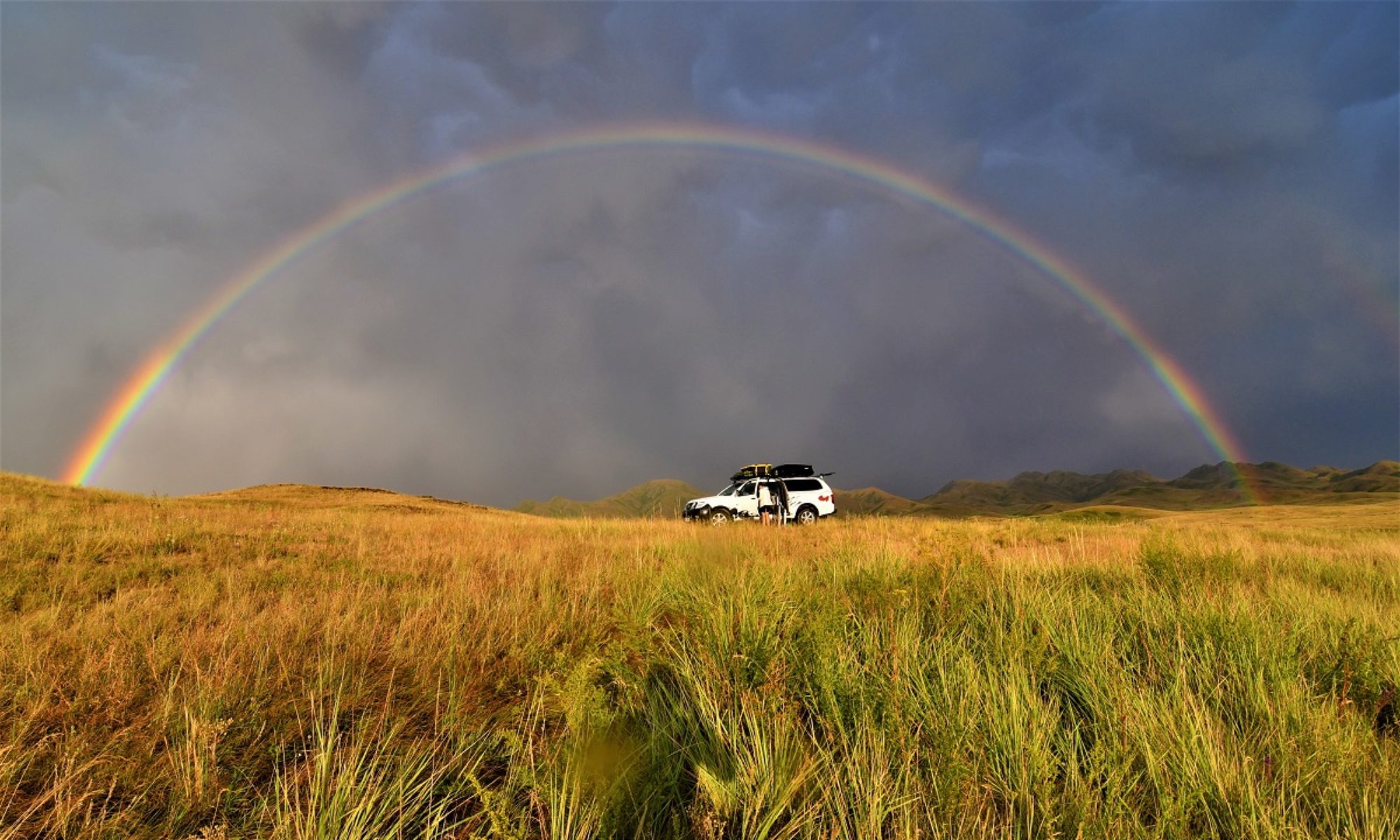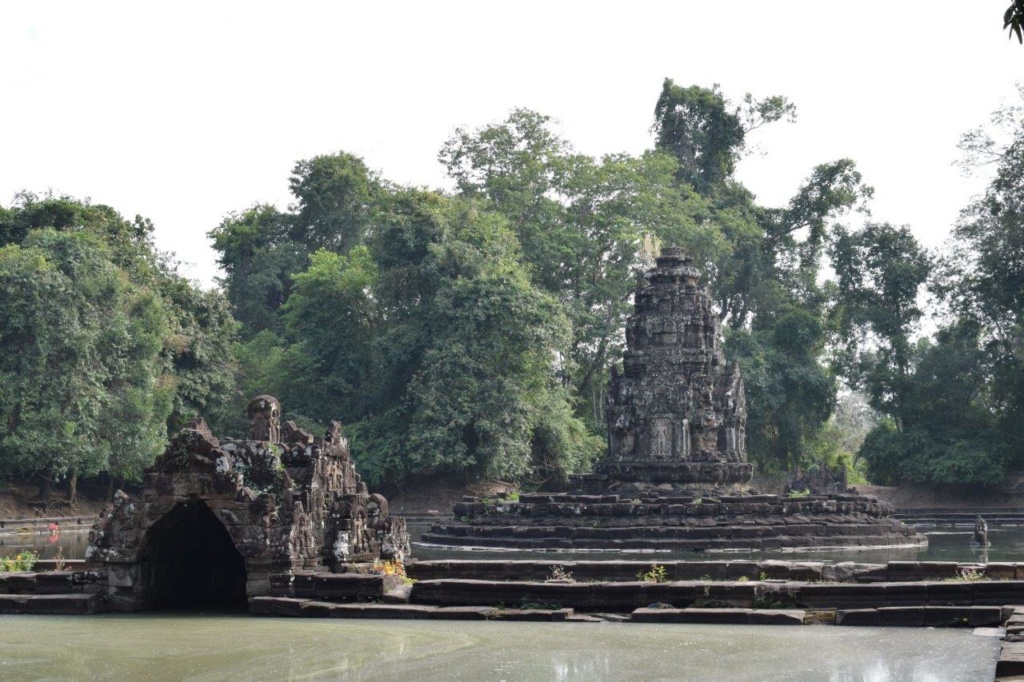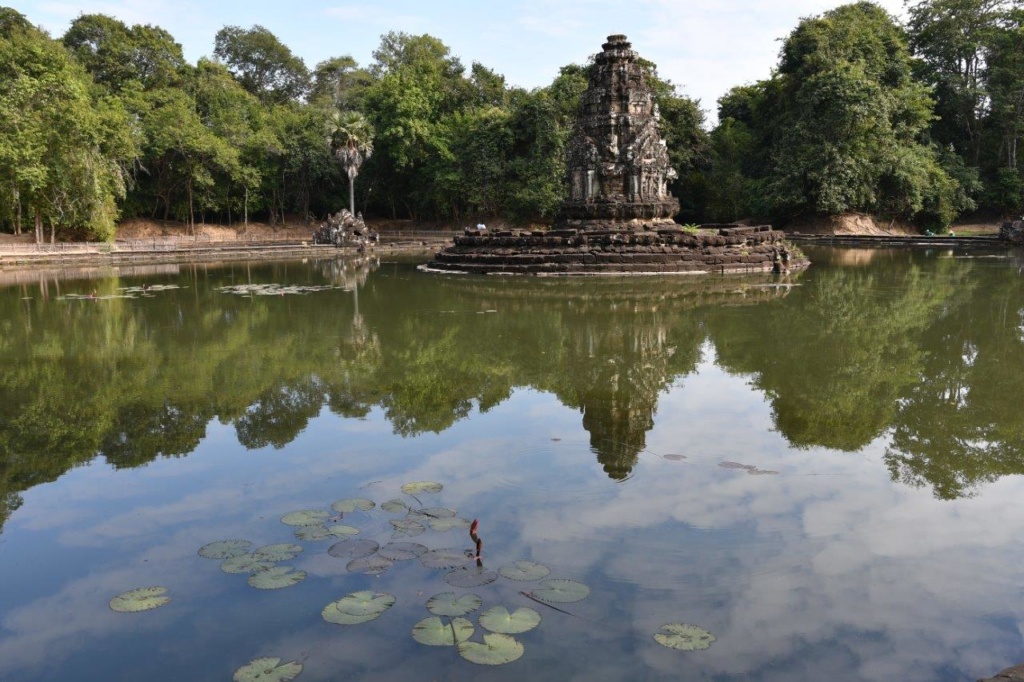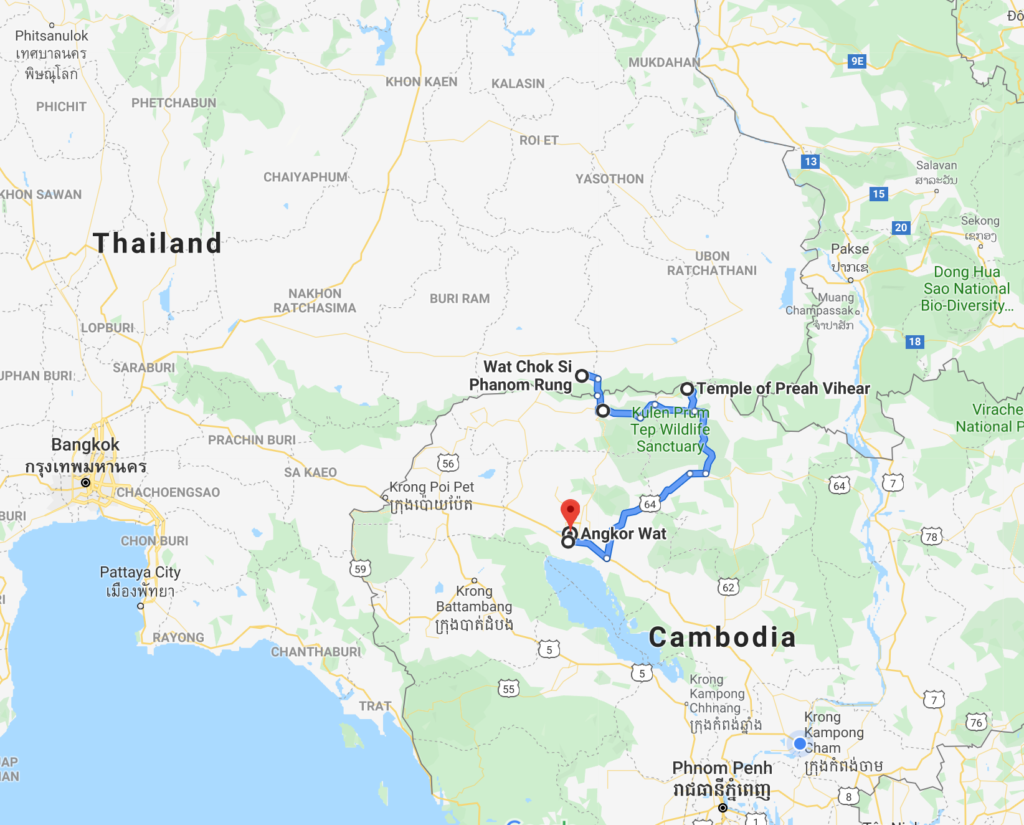
Thursday 5th December, 2019
We drove to the border after visiting Phanom Rung. It was getting dark by the time we got through. The officer mentionned that there was a hotel only a couple of 100m away. We were surprised to find such a fancy hotel in a remote border town but it turned out that there are a couple of casinos there, built to entice Thai visitors who are bused in free over the border.
Friday 6th December, 2019 – Preah Vihear
This temple complex sits just on the border with Thailand and the ownership has been disputed between the two countries with military deadly clashes afterThailand occupied the temple in 1954, following Cambodia’s independence . This went on despite a judgement in favour of Cambodia in 1962 at the International Court of Justice(ICJ) and the dispute was not resolved until november 2013 when the ICJ declared in a unanimous decision that the 1962 judgment had awarded all of the promontory of Preah Vihear to Cambodia and that Thailand had an obligation to withdraw any Thai military, police, or guard forces stationed in that area.
Situated on the edge of a plateau that dominates the plain of Cambodia, the Temple of Preah Vihear is dedicated to Shiva. The Temple is composed of a series of sanctuaries linked by a system of pavements and staircases over an 800 metre long axis and dates back to the first half of the 11th century AD. This site is particularly well preserved, mainly due to its remote location. It has some exquisite carved stone ornamentation.
Saturday 7th December, 2019 – Siem Reap
In Cambodia, as well as tuk-tuks, you see all sorts of motorised vehicles, often overloaded or carrying 4 or 5 passengers when it is designed for 1 or 2 maximum. Motorcycles/ scooters are everywhere and we have seen some driven by kids no older than 7 or 8 ! Some vehicles are mobile shops going from village to village, selling their wares.
Siem Reap
We arrived in Siem Reap mid-afternoon. This is the town closest to the temples of Angkor. The site is managed by a commercial outfit and it is reflected in the price of the tickets: a one-day pass will cost you USD 37, a 3 day -pass USD 62 and a 7-day pass USD 72 ! When you know that there were more than 2 million visitors last year, this is big business… The pass is issued with your name and picture and is controlled at the entrance of each temple. If you buy your pass after 5pm you can use it on that day ( for sunset views) and the whole of the following day so this is what we did.
Temples of Angkor
The Temples of Angkor are the legacy of the vast political, religious and social centre of the ancient Khmer Empire. At its zenith the city had a population of 1 million when London was a small town of 50,000! None of the houses, public buildings and palaces have survived because they were constructed of wood, as the right to dwell in structures made of brick or stones was reserved to the Gods.
The site is huge and is divided into Angkor Wat ( temple) and Angkor Thom ( or Great City, which itself is set on over 10 sq km). Five grand entrances allowed access to the capital city – five towering face gates – one for each cardinal point, and the Victory Gate leading to the Royal Palace area. Each gate is crowned with 4 giant faces and framed by elephants wading amongst lotus flowers.
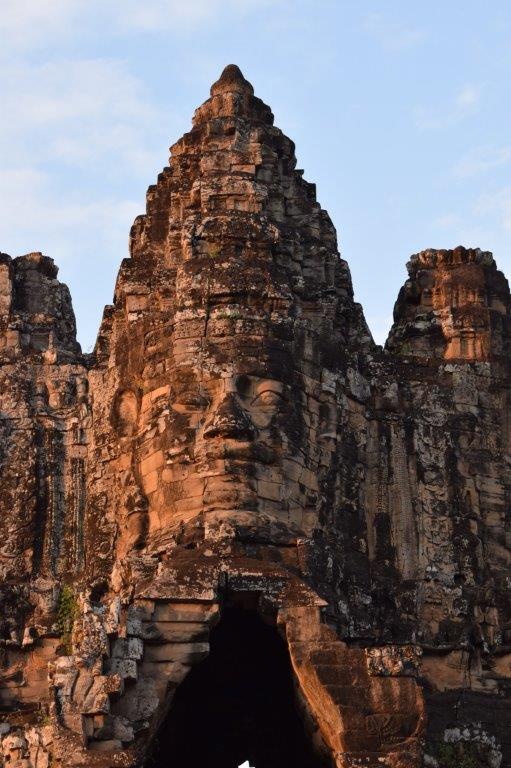
The South entrance Gate 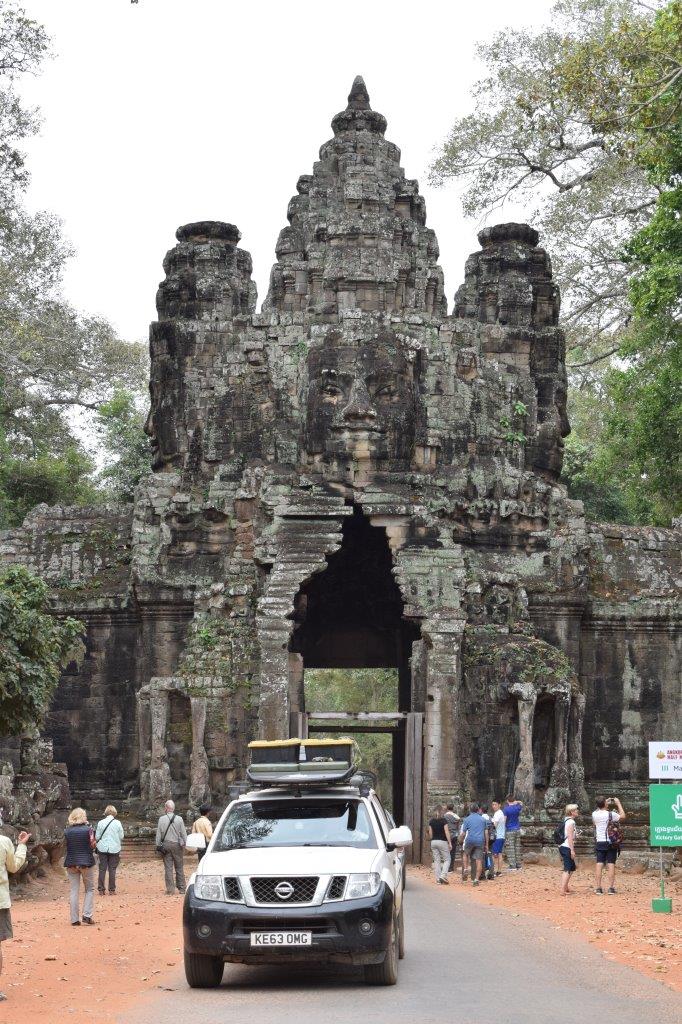
Victory Gate
Bayon Temple
We arrived at Bayon Temple at sunset. The temple is situated at the center of Angkor Thom. It was built in the late 12th or early 13th century as the official state temple of King Jayavarman VII. It reflects the genius but also the inflated ego of the king. Its 54 towers are decorated with 216 enormous coldly smiling faces of Avalokiteshvara, which bear more than a resemblance to the great king himself. These huge faces seem to stare at you from every angle exuding power and control.
Sunday 8th December, 2019
Last night, as we were driving back from the temple, we realised that the annual half- marathon was on this Sunday. Thankfully, the first race started at 5:30 am and by the time we arrived at 8 am it was over and the roads clear. We had one day to visit so we concentrated on the major temples.
Prasat Ta Prohm
The construction of this temple, originally called Rajavihara, started in 1186. Today its crumbling walls are taken over by roots of centuries-old trees. Many of the corridors are impassable because of creeping plants and shrubs. It was in fact used as a location in the film “Tomb Raider”.
Prasat Ta Keo
Ta Keo is a temple-mountain, possibly the first to be built entirely of sandstone by Kmers. It has five sanctuary towers, built on the uppermost level of a five-tier pyramid consisting of overlapping terraces (a step pyramid), surrounded by moats, as a symbolic depiction of Mount Meru.
Terrace of the Elephants
The 350m long Terrace of the Elephants was used as a giant viewing stand for public ceremonies and also as a base for the king’s grand audiance hall. It is so called because parading elephants decorate each end.
Terrace of the Leper King
The 7m high terrace is topped by a statue once believed to be that of a leprous king. However, it is thought now to be that of Yama, the god of death and that this site was used as a royal crematorium. The front retaining wall is decorated with at least five tiers of meticulous carvings of seated apsaras (celestial nymphs).
Prasat Preah Khan
This is one of the largest complexes at Angkor and is thought to have been a Buddhist university, housing more than 1,000 teachers. The complex is within a rectangular wall of around 700m by 800m and was more a city than just a temple. Built by King Jayavarman VII who turned from the Hinduism of his predecessors to Buddhism, this is a genuine fusion temple where both Hindu and Buddhist deities were venerated.
Preak Neak Poan
This small temple is built on a circular island in the middle of 4 square pools.
Angkor Wat
This is the most iconic temple of the Angkor complex and represent the ultimate expression of Khmer genius – an awe-inspiring temple that is stunning for both its grand scale and its incredible detail.
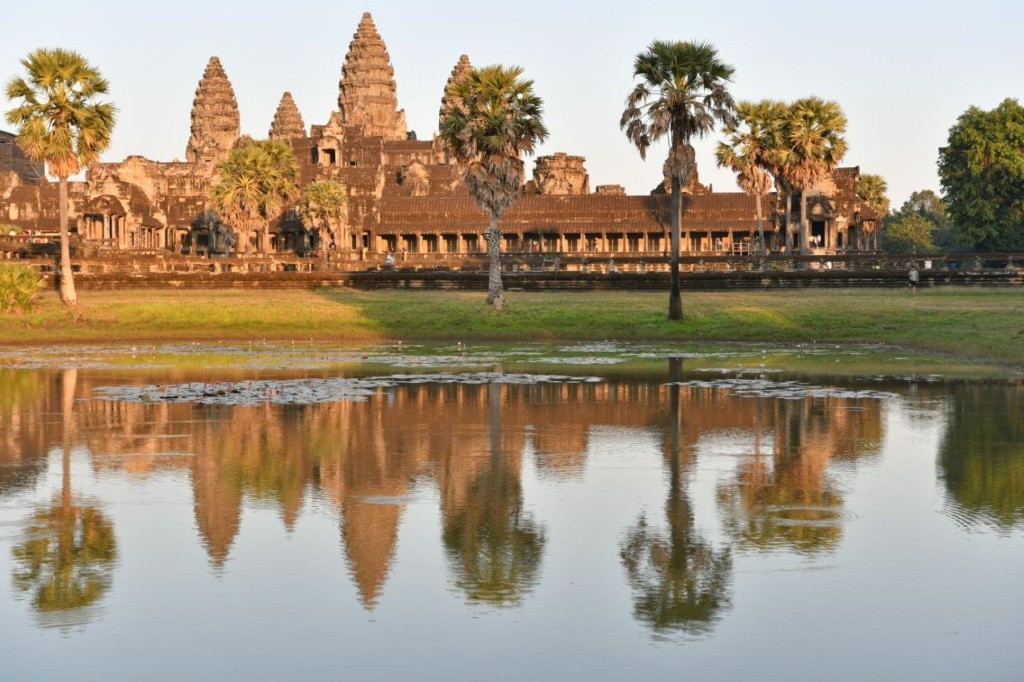
Angkor Wat is the earthly representation of Mt Meru, the Mt Olympus of the Hindu faith and the abode of ancient gods. It is believed to be the world’s largest religious building.( the site is measuring 162.6 hectares). It is a source of fierce national pride and is represented on the Cambodian flag.

In the end we saw more than we thought we could do in one day!
Yesterday, a policeman at the ticket office mentionned that people could go and camp at the Tourist Police station near Angkor Wat so we went and checked it out. There were two camper vans already there. We stayed the night and it was fine. We could have the use of toilets and outdoor kitchen. The only drawback was the early rise in the morning as the officers had a “rising of the flag” ceremony at 7 a.m in the courtyard with loud salute and hymn singing. One of the officers asked to take a picture of us and the car to add to their notice board.
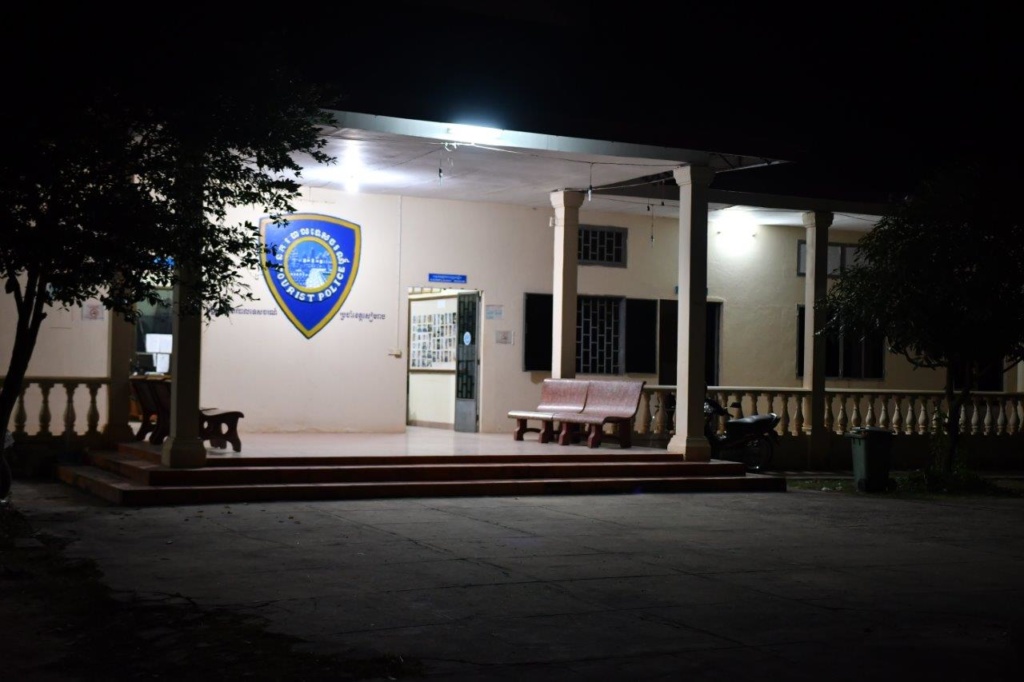
Angkor Tourist Police Station 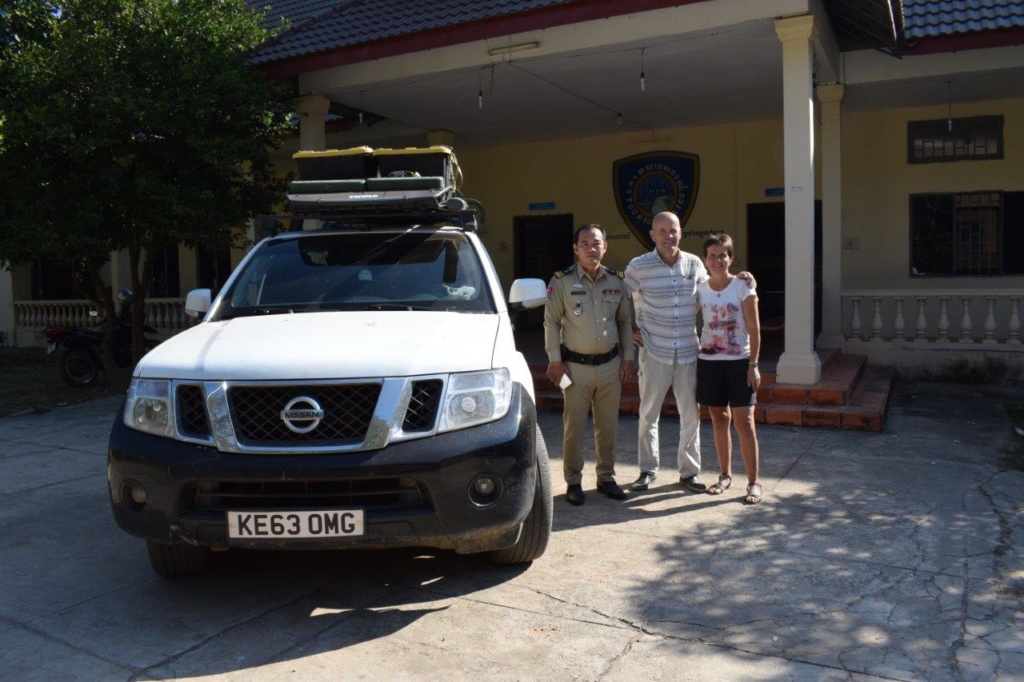
Angkor Tourist Police Station
